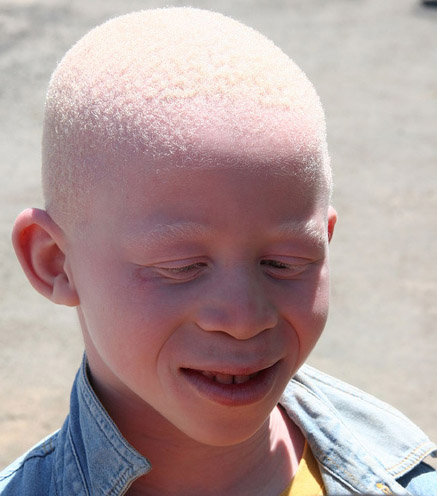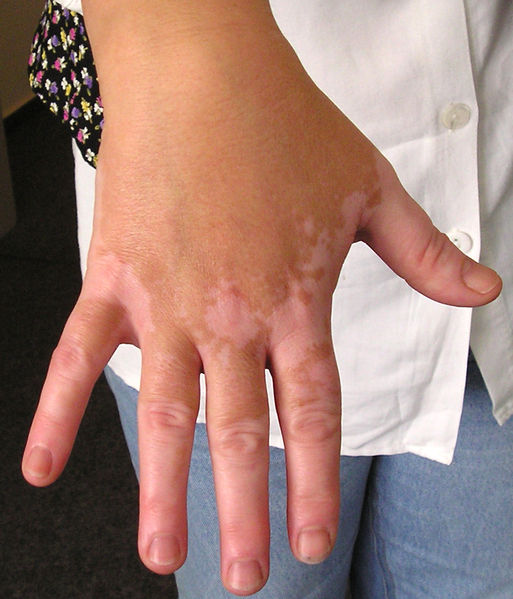Albinism - Why Some People have No Skin Pigmentation
Interview with
Lester Davids: The skin is made up of a number of cells, but two predominant cell types:
· The melanocytes which are the cells that produce melanin which actually colour our skin.
· And also the keratinocytes which form the upper layers of our skin, and are really just there to increase the layers to protect our skin against all sorts of injury.
So the melanocytes are probably more important because they are the ones that give us the colour that you actually see. So it's the first thing that you see really, and so we need to look after the melanocytes and the keratinocytes because it is from those if something goes wrong with those cells they cause all types of skin cancers.
 Meera Senthilingham: Why is our skin protective? Why is it important for us to have it?
Meera Senthilingham: Why is our skin protective? Why is it important for us to have it?
Lester Davids: The skin is the largest organ of the body. It is not only in the sensitive to touch and to the external environment, it is the first level of defence of our body that actually reaches the external environment. So in that sense, it is obviously very, very important for protection. The problem is that most of our skin - well, a large proportion of our skin is exposed to the elements all the time; and so we need to have an idea of how to look after our skin. Although your skin may be a different colour it doesn't mean that it is much more or much less protected because of that colour. In general, the same rules apply--how you protect your skin.
Meera Senthilingham: Now, another thing you look into is diseases and disorders that affect our skin. So which of these do you look into?
Lester Davids: The one condition that often occurs is the genetic condition called albinism. Because it's genetic, you're born with it and the problem with it is that melanocytes are actually absent in the skin, or the enzyme that produces the melanin is absent, and so the skin is completely pale because it lacks pigment, and that is obviously a problem because lighter skin is a little bit more susceptible to UVA damage or to sunlight damage. The cells that produce the melanin are also found in our eyes, and if you don't have those cells your eyes become very sensitive; and so albinos, besides being ostracised in some of our communities in South Africa and in southern Africa, they also have very sensitive eyes and they need to look after that.
The third place that the melanocytes are missing is in the hair and so they have red or very light-brown hair and that also needs extra protection because they don't have melanin. So they normally wear headgear or head covering.
The other condition which is non-genetic but can be caused by a variety of factors, including oxidative stress--stressing out, is called vitiligo, and here the melanocytes are predominantly disappearing and so we get large patches of non-melanized areas of our skin which are white. If your skin is a bit dark that looks very contrasting and people often think that they have a contagious disease which is absolutely incorrect. It is just the melanocytes that are not there. The nice thing about vitiligo, the non-genetic condition, is that there is treatment available and these days if you see a very good dermatologist they can recommend treatment and re-pigmentation can occur after the treatment, or after several bouts of treatment.
Meera Senthilingham: What does the treatment involve in order for someone to get their colour back?
 Lester Davids: In vitiligo they give them a psoralen which is a photosensitizer and then they shine UVA light on them. That photosensitizes the skin and also photosensitizes the melanocytes or the stem cells of melanocytes that are left, with a result that those cells divide and they start to re-pigment. The nice thing is that in hairy areas the stem cells or melanocytes sit in a niche around the hair follicle and this treatment--the psoralen plus UVA stimulates them to start producing melanin, and so these patients, fortunately for them, if they respond, they will start to re-pigment and actually get the colour back.
Lester Davids: In vitiligo they give them a psoralen which is a photosensitizer and then they shine UVA light on them. That photosensitizes the skin and also photosensitizes the melanocytes or the stem cells of melanocytes that are left, with a result that those cells divide and they start to re-pigment. The nice thing is that in hairy areas the stem cells or melanocytes sit in a niche around the hair follicle and this treatment--the psoralen plus UVA stimulates them to start producing melanin, and so these patients, fortunately for them, if they respond, they will start to re-pigment and actually get the colour back.
Meera Senthilingham: Now looking more into albinism it's a genetic condition but is it inherited? Is it due to mutations? How does it actually happen and what genes does it affect?
Lester Davids: Albinism comes in a variety of different types, one of the common most ones in southern Africa is called ocular cutaneous albinism. This is a genetic defect in the enzyme called tyrosinase, and tyrosinase is the enzyme that the melanocyte uses to produce melanin. So that enzyme particularly is not working properly, and so no melanin is produced; and these days with gene therapy on the increase, if there are lots of research happening where they're actually looking at trying to correct that genetic defect, because it is in fact the way that tyrosinase is made, inside the cell, and where it actually moves to inside the cell that has been blocked; and so you don't get tyrosinase, the enzyme, doing it's proper job, and so you get a lack of pigment.










Comments
Add a comment